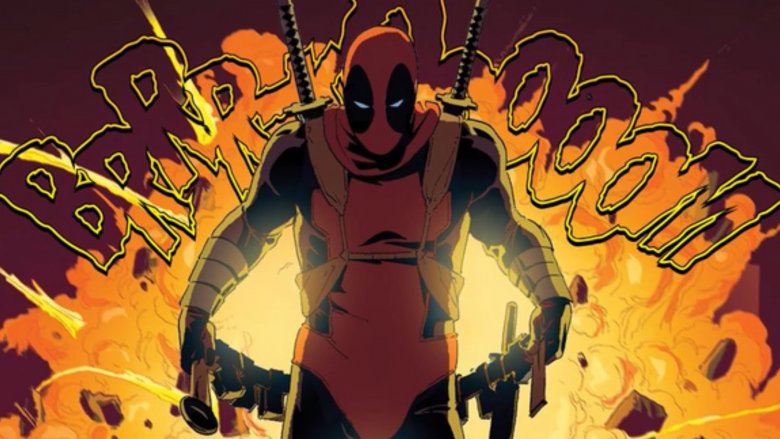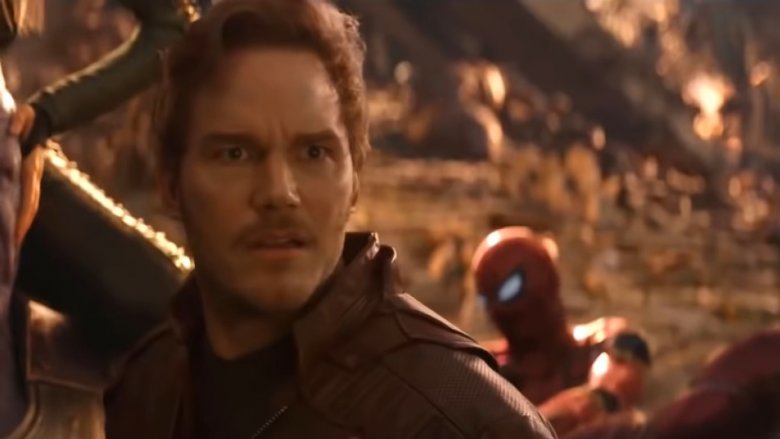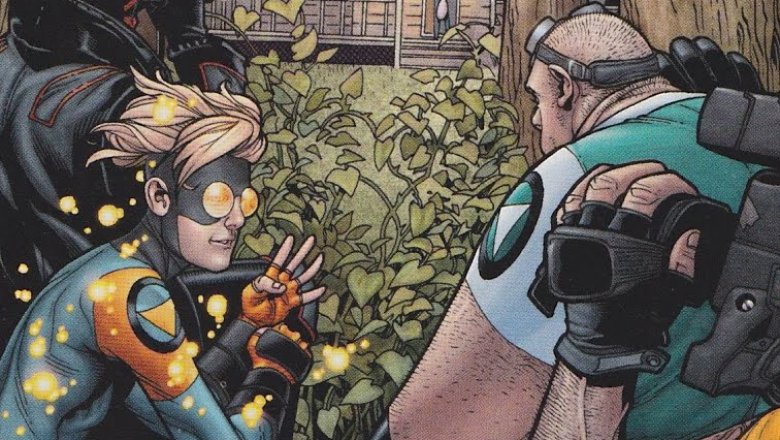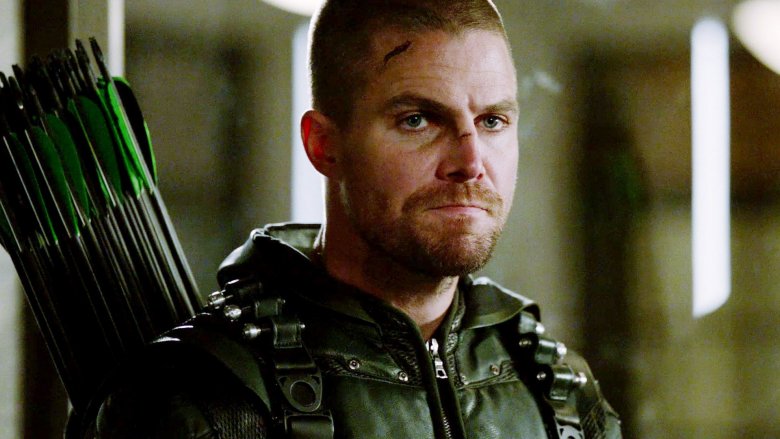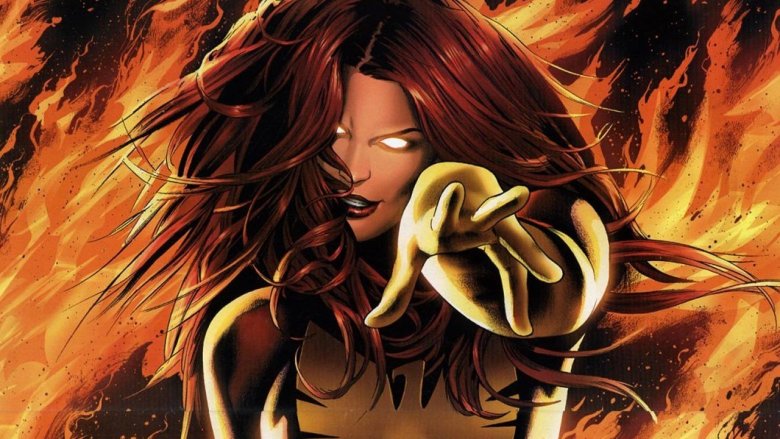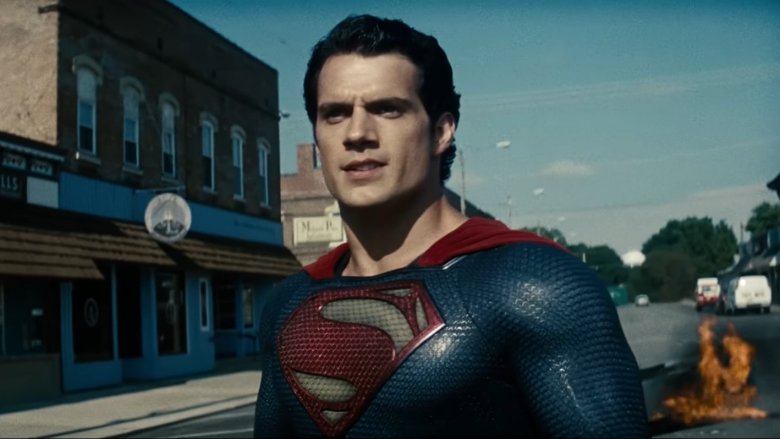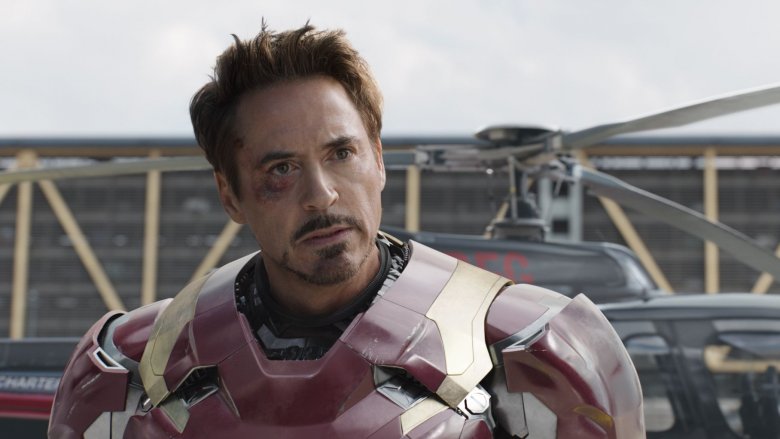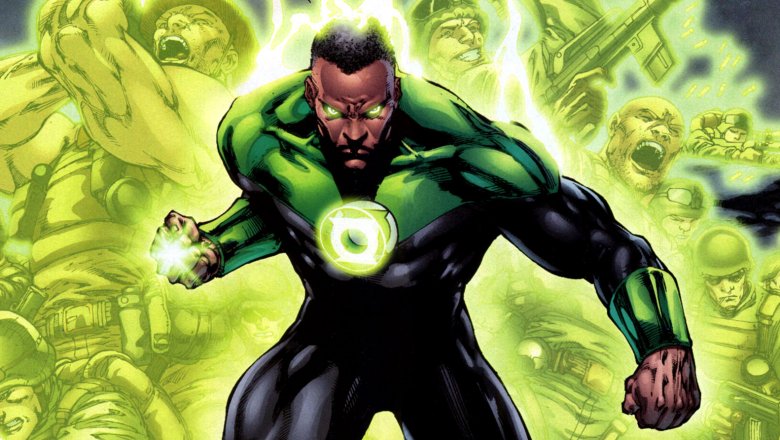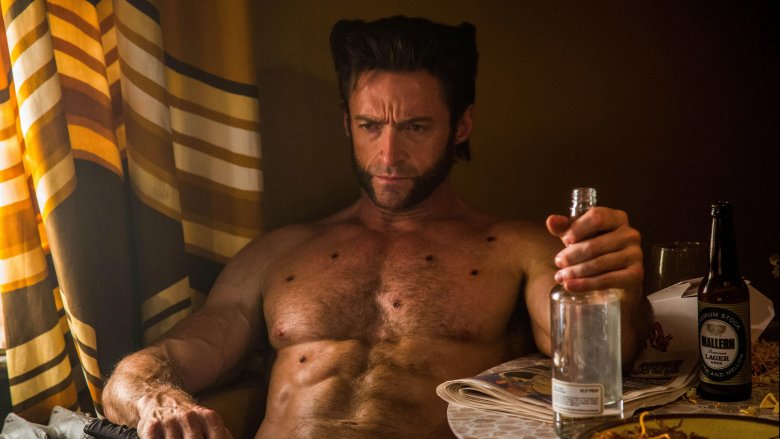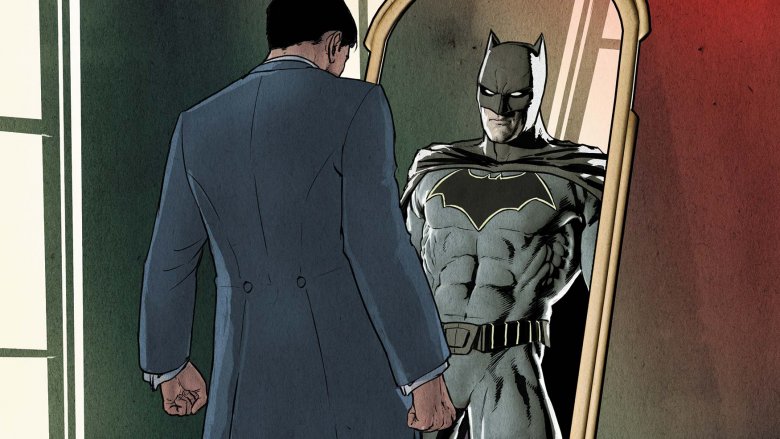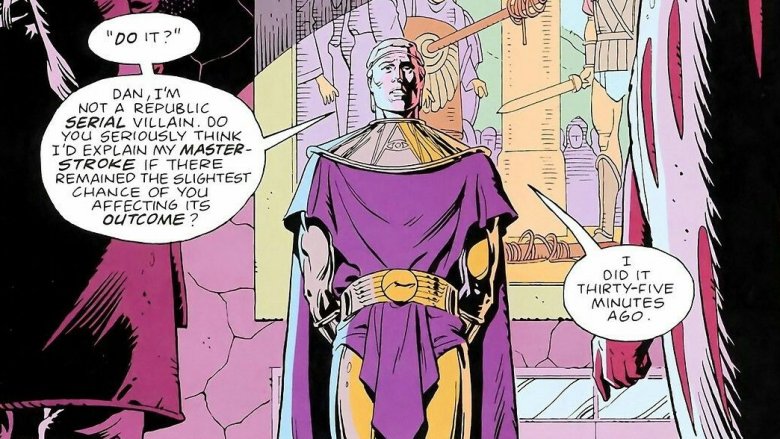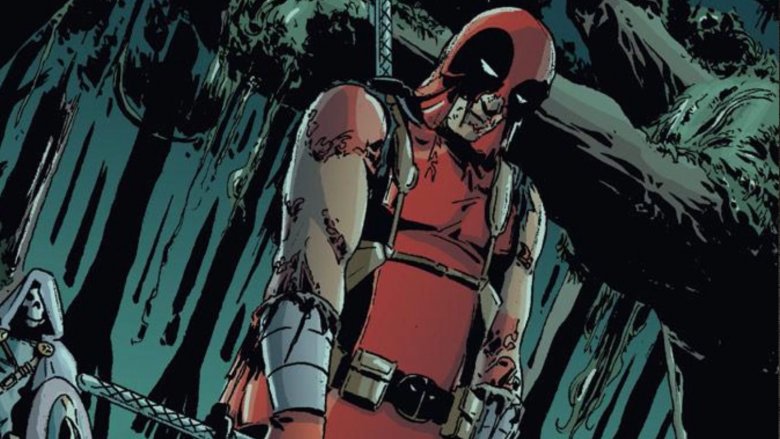Superheroes Responsible For A Crazy Amount Of Deaths
As a general rule of the genre, most superheroes try not to kill people if it can at all be avoided. Some take this even further, and vow to not let anyone around them die under any circumstances. These heroes swear that no matter how evil their foes may be, and regardless of the larger consequences, they will preserve life over all else.
Although some superheroes manage to live up to this ideal, and can sleep well at night with a completely clean conscience, most caped crusaders have caused at least a few people to die at some point while trying to save the world. Some of them caused huge amounts of death through collateral damage, often the result of an accident or negligence. Some had a period when they went bad, and either became an antihero or a full supervillain. There are also some rare individuals for whom it wasn't just a one-time thing, and who continue to murder anyone who gets in their way as part of their normal superheroing philosophy.
Depending on where you draw the line between what does and does not constitute "being responsible" for someone's death, any one of these characters could be the biggest monster on this list. So take a look at this series of potential contenders from comic books, television, and movies, judge for yourself as to which of them has the most blood on their hands.
Star-Lord
Avengers: Infinity War ends with perhaps the largest mass murder in film history. After obtaining all six Infinity Stones, Thanos snaps his fingers and instantly kills half the universe at random. There are multiple superheroes who each deserve at least a small share of blame for letting him succeed: Doctor Strange gives up the Time Stone to save Tony Stark. Gamora gives up the Soul Stone to save Nebula. But the hero who deserves the bulk of blame for not stopping "The Snap" has to be Peter Quill, a.k.a. Star-Lord.
There are two reasons for this. First, when Peter made his fatal mistake, attacking Thanos while Mantis had him hypnotized, his timing was especially bad. There wasn't just a single stone on the line: His team had almost secured the entire Infinity Gauntlet, thus recovering the four Infinity Stones Thanos had gathered to that point and the device he needed to wield them. Second, Star-Lord wasn't choosing to save someone or something else in exchange for letting Thanos succeed. He was just lashing out after learning that Thanos killed Gamora — understandable, but also undeniably pointless. So not only did Star-Lord's mistake cost the heroes everything, it was especially unforgivable because it gained them nothing.
If you want to be totally accurate, then yeah, there is blame aplenty to go 'round. But if you need just one face to pin to your wall and throw darts at, Star-Lord is your boy.
Speedball
If you've seen Captain America: Civil War, then you probably recall the basic premise. After the Avengers unintentionally cause the deaths of innocent civilians in battle, world governments push for tighter regulation of superheroes. This creates a rift between two factions of heroes, and a civil war begins. The comic book version of this story is similar, but the inciting incident that kicked things off was much worse. It starts with a hero named Speedball.
At the start of the Civil War comic, Speedball's team, the New Warriors, have their own reality TV show, so they have cameras following them around as they fight crime. Speedball's desire for ratings drives him to push his team to engage in increasingly risky endeavors, such as raiding a home in a crowded Connecticut suburb where a group of wanted supervillains are hiding out.
During the raid, they corner an especially dangerous supervillain named Nitro, who has the ability to explode like a bomb and then reform himself at will. Nitro explodes in a massive fireball that consumes the entire block, killing not only the New Warriors and his fellow villains, but also hundreds in the surrounding neighborhood — 612 in all, including 60 children attending a nearby elementary school.
Later stories explore the long-term effects of this event on Speedball, who, due to his superpowers, ends up being the only one to survive the explosion. As a way of atoning, he rebrands himself as a much more somber superhero named Penance.
Green Arrow
In the landscape of superhero TV, one surprising thing about the first season of the CW show Arrow was Oliver Queen's willingness to kill evildoers with little provocation. In one sense, this is somewhat inevitable. It's difficult to avoid killing your foes when your primary attack is shooting them with a bow and arrow, unless you decide to tip your arrows in boxing gloves, as some of the goofier comic book and cartoon incarnations of Green Arrow have done. A graphic from Comic Book Resources shows that in the first season alone, Oliver kills 55 people.
Queen eventually vowed to stop killing people, and although he has mostly stuck to this, ongoing flashbacks continue to reveal more and more people that he killed in his dark past as a vigilante and member of the Bravta, so his kill count keeps ticking up. One viewer who did the math came up with a figure of 165 people killed by Queen over the show's first five seasons.
How many more people Oliver kills before the end of the series remains to be seen, although from here on, most will probably occur in flashbacks. Even though he has a veritable Halloween store full of skeletons in his closet, present-day Oliver is mostly doing his cartoon self proud, such as in the third season episode "Guilty," when he did indeed put a boxing glove on the end of an arrow to take someone down non-lethally.
Jean Grey
The hero that we all know and love as Jean Grey once went through a very dark period. For a while, Jean was bonded to an unfathomably powerful alien consciousness known as the Phoenix Force which expanded her powers greatly, but also slowly turned her super evil.
One day, Jean decided to replenish her power in a way that any sensible space god would, by draining the energy from a nearby star. She noticed that there was a planet nearby inhabited by a race known as D'Bari, but didn't care. The star exploded, and all five billion D'Bari were incinerated.
Even though the plan was for Jean to eventually become a superhero again, editor Jim Shooter wouldn't allow it. In The Dark Phoenix Tapes, Shooter states that allowing Phoenix to be redeemed after killing billions of people would be "the same as capturing Hitler alive and letting him go live on Long Island." The only option left for was Jean to die.
Eventually, the writers found a way to redeem Jean, but it required some pretty heavy twisting of the continuity. They "revealed" that the version of Jean that went bad was actually the Phoenix Force itself, merely mimicking Jean's appearance. Our Jean was not only still alive, but also blameless for the actions of the Phoenix. When it takes something that convoluted to keep you around, you know you messed up pretty bad.
Superman
Despite usually having a reputation for a being a relatively cautious hero in most incarnations, the version of Superman that appeared in the film Man of Steel did not seem to place a high priority on avoiding collateral damage. This was especially true during his final battle with General Zod, which bounced around downtown Metropolis, toppling skyscrapers as it went. Although the film never gives specific figures about just how many people are killed during this conflict, it's safe to assume that the number is fairly high.
Fortunately, a company known as Watson Technical Consulting, which specializes in modeling the effects of both natural and artificial disasters, is here to help. They ran a surprisingly scientific study on how much damage a battle like this would inflict on a dense urban center like Metropolis, using Chicago and Manhattan as stand-ins.
Their results were blood-chilling. According to their projections, Supes' final battle with Zod would have resulted in about 129,000 people confirmed dead, about 250,000 missing in the rubble (most of whom would also be dead), and an additional million people injured. Also, the amount it would take to repair the damage to structures and infrastructure would come in at a cool $2 trillion.
Now it makes sense why Clark gets a day job at the Daily Planet at the end of that movie. After causing that much carnage, we'd all want to put on a pair of glasses and pretend we were someone else.
Iron Man
It's hard to talk about superheroes who have caused death at a large scale without discussing the film version of Iron Man. Where to even begin?
First up, there's the period when Tony Stark was just the CEO of defense contractor Stark Enterprises. At that time, Obadiah Stane, Tony's right hand man, was secretly selling Stark weapons to terrorists. This one is debatable, but Tony's lack of concern with his company's secret dealings means that he is at at least partially responsible for the lives these weapons took, such as the parents of Scarlet Witch and Quicksilver.
Second, Iron Man regularly uses lethal force against enemy combatants. Between Ten Rings, AIM mercenaries, and HYDRA soldiers, Iron Man has easily killed over a hundred people directly. Also, don't forget that time at the end of The Avengers when he flew a nuke into a Chitauri control ship, killing several thousand alien invaders.
And finally, there's Ultron, the superintelligent A.I. Tony created that wanted to destroy all of humanity. There were quite a few Sokovians who died before Tony's superteam managed to pull the plug on that particular killing machine, correcting Tony's biggest, and most lethal, mistake.
For most heroes we've talked about, there is one clear reason for their inclusion, but for Tony Stark, it's more about the sum total of many different catastrophes he's caused. Sure, he always feels bad afterwards, but his myopic tech bro utopianism means he never really learns his lesson.
Green Lantern
In terms of cosmic level screwups, one that rivals Jean Grey's biggest mistake certainly falls at the feet of Green Lantern John Stewart. Although he eventually grew into a wise and measured veteran, during his early days, Stewart was aggressively individualistic and arrogant.
This came to a head during an event known as Cosmic Odyssey, when John traveled to the planet Xanshi along with fellow Justice Leaguer Martian Manhunter in order to defend it from an evil force known as the Anti-Life Equation. The trouble began shortly after, when John decided that their foe was going to be too much for his companion to handle. He used his powers to imprison Martian Manhunter in a force bubble and send him away, saying "I'll move a lot faster not having to worry about you." Ignoring the Manhunter's pleas, John charged in to face whatever danger awaited him alone.
And then he saw it. Famously, at this point in time, Green Lantern rings were unable to affect anything yellow. Towering above John was an enormous world-destroying bomb, set to explode in just a few seconds... and it was completely yellow. A moment later, Xanshi and all of its inhabitants were gone.
John's forcefield managed to protect him from the blast, but his psyche never recovered from the guilt of failing to protect the planet. From then on, he was a changed man. And unlike Jean Grey, later writers never cut him a break. His biggest mistake stayed canon forever.
Wolverine
So far we've mostly addressed heroes who have only been indirectly responsible for widespread loss of life. Now let's talk about a character who makes people die much more directly. In terms of a hero who kills pretty much every enemy he faces, there's no one with as much as blood on their hands, or claws, as Hugh Jackman's portrayal of Wolverine.
You might not realize it as you're watching most X-Men films. Their PG-13 ratings means that they are usually fairly bloodless. But if you watch closely, you'll realize Wolverine utilizes claw-based murder as his default mode of superheroing in nearly every conflict he gets involved in. According to the most thorough and up-to-date YouTube supercut we could find, his current kill count across all the films, including Logan, is 142.
To a certain extent, this seems unavoidable. When your power is "knife hands," it's hard to tell a story that doesn't involve at least some degree of murder — unless you exclusively fight robots, in the vein of the '90s cartoon. The weird thing is, unlike with the Arrowverse's Oliver Queen, Logan's use of lethal force is rarely framed as a character defect, an element of his dark past that he needs to get over. Perhaps the decision to make the combat bloodless and also the decision to not spend much time on this potential plot point are both trying to serve the same goal, keeping you from thinking about it too much.
Batman
It's an old debate. Some argue that the comics version of Batman, who refuses to kill people, is responsible for zero deaths. Others claim that his refusal to put down dangerous criminals who are beyond rehabilitation means that he is responsible for more deaths than could ever be counted.
It all depends on your perspective. If you are a consequentialist, you believe that actions are not wrong in and of themselves. Instead it is only the ramifications of one's actions that matters. On the other hand, if you follow a deontological theory of ethics, you believe that certain actions can be always right or always wrong, regardless of the consequences.
Most believe Batman subscribes to a deontological philosophy. He believes that killing anyone, under any circumstances, is wrong — even the Joker, who has killed 543 people that we know of throughout his criminal career. But from another perspective, Batman might be a consequentialist. He stated in 2005's Under the Red Hood that the real reason he doesn't kill is because he worries that if he started, he might not be able to stop. Bruce has also stated from time to time that his refusal to kill is his way of setting an example for the people of Gotham. Perhaps the consequences of his actions are actually more important to him then whether or not killing is inherently wrong.
For further reading, Looper's own Chris Sims dove deep into this classic geek dilemma in a truly wonderful article.
Ozymandias
Warning: BIG spoilers for the comic book version of Watchmen.
After years of being a hero the old-fashioned way, supergenius Adrian Veidt, a.k.a. Ozymandias, realized that maybe punching muggers wasn't the best way for him to leverage his massive budget and intellect, when a larger problem was looming over the entire world: a potential nuclear war between the U.S. and Russia.
Veidt's solution? Bear with us here, cause it's a weird one. He planned to create a genetically engineered psychic squid monster and teleport it into downtown Manhattan, faking an alien invasion. This would cause the United States and Russia to set aside their differences to unite against this new interstellar threat, that in reality, was completely fake. Fake in that it isn't really an alien, but not fake in that it actually would kill millions of people.
The craziest part of all: he pulls it off. Watchmen ends when his fellow heroes fail to stop him, millions of people die, and then, as he predicted, the war is over.
Forget heroes who never kill, Ozymandias combines the egotistical genius of Iron Man and the moral code of the Punisher. Some might argue that Ozymandias doesn't really count as a hero at that point, but he certainly thinks of himself that way. But before you go out and start buying "Ozymandius Did Nothing Wrong" t-shirts, remember that in the real world, the Cold War ended without the need for fake alien invasions. So sorry, Adrian, you're still an egotistical madman.
Deadpool
Finally, if we're allowing non-canon stories into the mix, there is a single clear winner in the debate over which superhero has killed the most people. In the wonderfully twisted comic called Deadpool Kills the Marvel Universe, Deadpool kills everyone in the world, and then he keeps going.
One of Deadpool's unique powers is that he knows that he's in a comic book and jokes about this regularly. This particular story begins when Wade finally snaps and becomes convinced that existing within the confines of fiction is a hellish prison. He realizes that everyone in the world needs to be set free, and he decides to accomplish this by killing them.
What follows is a series of obscenely gory battles, wherein Deadpool murders the Fantastic Four, the Avengers, Spider-Man, the X-Men, and many others, until he finally breaks out of the comic itself, and murders the people who were writing it.
But believe it or not, this is not the end of the story. In a sequel called Deadpool Killustrated, Wade continued to traverse the multiverse, now killing characters of classic literature like Captain Ahab and Tom Sawyer. Then there was a third series called Deadpool Kills Deadpool, in which the less evil Deadpool from normal Marvel continuity has to fight the more evil Deadpool from the Deadpool Kills... series, who by now has become known as Dreadpool.
Y'know, maybe Star-Lord deserves an apology. For some reason, letting just half the universe die on accident doesn't seem so bad anymore.
